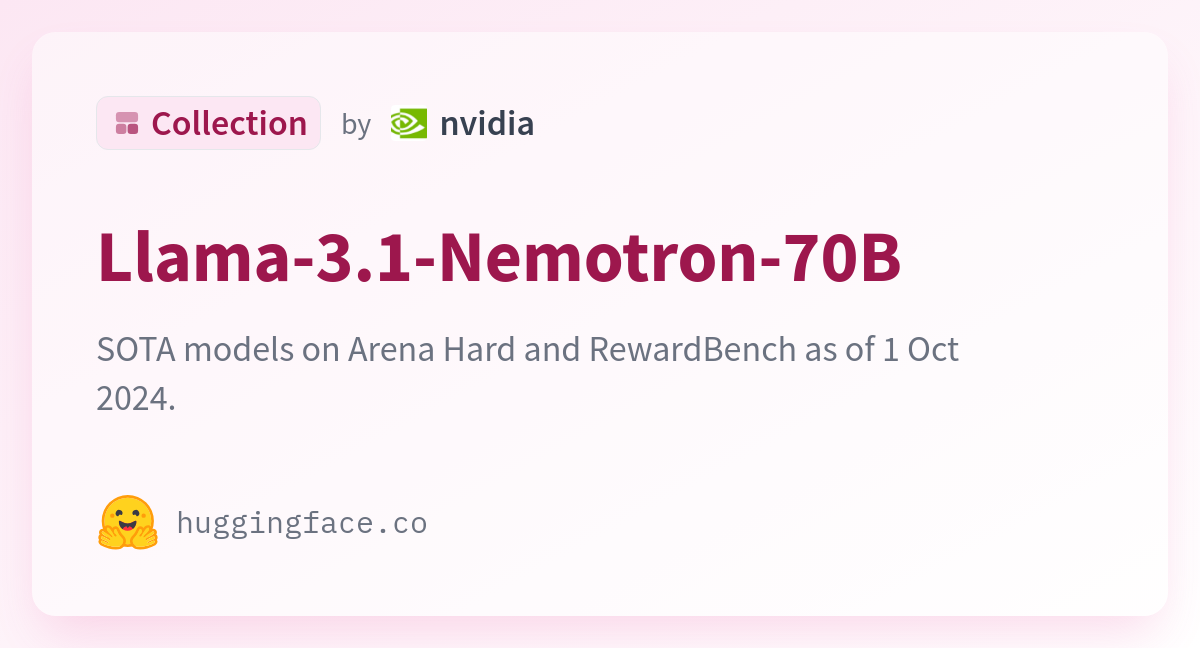World ID, Perplexity Spaces, AI Utopia & Agent Swarms: A Fall AI Recap Post
In todays Download: After a calm fall break, we're back with a series of exciting AI announcements. This week brought big news from familiar players like OpenAI and Adobe, new research from Apple, and fresh benchmarks from Nvidia. Here's an in-depth look at the most important stories. Take your time — it’s been far from quiet while we’ve been on vacation.
👁️ Worldcoin Unveils the Next-Generation Iris Scanner

Worldcoin, known for its controversial “proof of personhood” technology, has rebranded to World, marking a new era for the company. Alongside the rebranding, they introduced an upgraded version of their iris-scanning Orb technology. The new Orb promises to be five times faster than its predecessor, making the onboarding process simpler and quicker across countries worldwide.
World Unveils New Orb and New Ways to Verify to Scale Network to 1 Billion Humans
The next-gen Orb is powered by NVIDIA's most advanced Jetson module, offering nearly 5x the AI performance. Despite technological progress, privacy concerns remain, leading to bans in some countries. The question is whether they can overcome these challenges and earn public trust.
World ID 3.0: Enhanced Privacy and Deepfake Prevention
The introduction of World ID 3.0 protocol comes with new features like World ID Credentials and Deep Face, designed to combat AI-generated deepfakes. The latest version of the World App now enables anonymous integration with third-party applications, giving users more flexibility and privacy.
If you're enjoying Nerdic Download please forward this article to a colleague.
It helps us keep this content free.
🌍 Perplexity introducerer: Spaces

Perplexity AI has made it even easier for users to organize their research and files with the launch of Spaces. This new feature not only provides an intuitive way to group Threads but also allows Pro users to upload and search their own documents. Spaces lets users store, search, and access files directly without needing to re-upload them.
Spaces are especially helpful for large projects like exam preparation, travel planning, or in-depth research on specific topics, offering a streamlined experience for those who work with vast amounts of information.
🔮 Anthropic CEO Predicts an AI Utopia

Dario Amodei, CEO of the AI-safety-focused lab Anthropic, has released a long-form essay envisioning how AI could revolutionize society within the next 5-10 years. He predicts that by 2026, we’ll see AI systems smarter than Nobel Prize winners in a wide range of fields. These AI systems could compress 100 years of scientific progress into just 10 years, leading to breakthroughs in curing diseases and doubling human life expectancy.
How AI Could Transform the World for the Better
Amodei believes AI will drive economic growth and even strengthen democracy by countering misinformation and undermining authoritarian regimes. He acknowledges potential risks, such as mass layoffs, but argues that new economic models will emerge to mitigate these problems.
🐝 OpenAI Introduces Swarm: A Multi-Agent Framework
OpenAI has announced Swarm, a new open-source framework designed to simplify the coordination and control of multiple AI agents in complex systems. Swarm provides tools to manage interactions between different agents using building blocks like "agents" and "handoffs." This allows one agent to pass control to another during conversations or tasks, automating complex multi-step processes.
Although still experimental, Swarm offers AI developers a new opportunity to explore how multiple agents can collaborate to solve bigger and more intricate tasks.
🤔 Apple Reveals LLM Limitations
Apple engineers have published a research paper revealing significant limitations in the reasoning abilities of large language models (LLMs), including those developed by leading AI labs like OpenAI. Apple introduced a new benchmark, GSM-Symbolic, to test LLMs' mathematical reasoning skills. The research shows that minor changes in question phrasing or irrelevant information can drastically affect model accuracy, with error margins of up to 65% in some cases.
This raises important questions about the reliability of these models and the risks of using them in increasingly complex applications.
🚀 AMD Unveils Next-Generation AI Chips

At the Advancing AI 2024 conference, AMD introduced a new lineup of AI-focused processors aimed at competing with rivals like Nvidia and Intel. The new Ryzen AI PRO 300, designed for enterprise AI PCs, delivers 40% better performance than Intel’s Core Ultra chips. AMD also unveiled the Instinct MI325X, an AI accelerator with 1.8x more memory capacity and 1.3x greater bandwidth than Nvidia’s H200 GPU.
AMD plans to launch annual updates for its AI chips, with the MI350X expected by the end of 2025 and the MI400 in 2026, signaling an aggressive push into the AI market.
🤖 OpenAI Introduces AI-Agent Benchmark MLE-bench
OpenAI has launched MLE-bench, a new benchmark that tests how well AI agents perform on real machine learning tasks. MLE-bench includes 75 selected Kaggle competitions, covering a wide range of tasks like model training, data preparation, and experimentation.
OpenAI’s best setup, the o1-preview model with AIDE scaffolding, managed to win at least a bronze medal in 16.9% of the competitions. While the results show promising progress, the models still struggled with tasks requiring adaptability or creative problem-solving. This benchmark represents a new step toward evaluating agents’ ability to tackle more complex tasks than previous benchmarks.
🎬 Adobe Unveils Firefly Video Model at MAX Conference

Adobe has expanded its Firefly AI model to include video generation features, which were presented at their MAX conference. With this new update, users can now generate videos based on text prompts or images, unlocking new creative possibilities in Adobe Premiere.
In addition to video, the new functionality includes the ability to generate 2D and 3D animations, text graphics, and b-roll clips. Premiere Pro also receives a new feature called Generative Extend, which makes it easy to extend clips and optimize editing using AI. Adobe has further introduced over 100 new AI-driven features across their Creative Cloud apps, cementing their position as a leading player in AI-powered creative software.
🗞️ New York Times Sues Perplexity

The New York Times has issued a cease-and-desist to the AI search platform Perplexity, accusing the startup of using their content without permission. According to the NYT, Perplexity violates copyright by using their articles for AI-generated summaries.
NYT claims Perplexity previously promised to stop crawling their content, but results still appear on the platform. Perplexity has stated that they are open to collaborating with publishers and will respond to the request by October 30. This case is another example of rising tensions between media companies and AI platforms, which risk diverting traffic and ad revenue from traditional news outlets.
💽 Nvidia Unveils Nemotron

Nvidia has just launched Llama-3.1-Nemotron-70B-Instruct, a new LLM model that surpasses industry leaders like GPT-4 and Claude 3.5 in several benchmarks. The model is based on Meta’s Llama 3.1 70B model but has been fine-tuned by Nvidia using advanced machine learning methods like RLHF (Reinforcement Learning from Human Feedback).
Llama-3.1-Nemotron-70B - a Nvidia Collection
Nemotron has achieved top rankings on several alignment benchmarks, and Nvidia has open-sourced the model along with its training data. This is another step toward making smaller, more efficient open-source models capable of competing with the big players in the AI world.
💼 Sierra's Valuation Soars to $4 Billion Amid Investor Interest in AI Startups

Sierra's valuation is skyrocketing as the AI market attracts increasing numbers of investors. OpenAI Chairman Bret Taylor, along with former Google executive Clay Bavor, founded Sierra to create an AI-agent platform that automates customer service tasks for businesses. Sierra is now entering a new funding round that could raise the company’s valuation to over $4 billion — a significant leap from the $1 billion valuation in January 2024.
Sierra’s technology has caught investors' attention, especially in a market that is becoming more competitive for AI startups. Sierra is a prime example of how AI-driven solutions for businesses can create enormous market value. As competition intensifies, Sierra is emerging as one of the leading startups driving a new wave of AI-powered business solutions.
🎮 AI Simulates Counter-Strike Using Neural Networks

Researchers from the universities of Geneva, Edinburgh, and Microsoft have made a breakthrough in AI simulation with their DIAMOND model, which can generate a playable version of Counter-Strike: Global Offensive (CS).
DIAMOND uses a diffusion-based approach, where the model predicts the next frame based on previous frames and player actions. It can generate the game at 10 frames per second — an impressive feat considering the model was trained on only 87 hours of gameplay data, a fraction of the data that similar projects typically require.
Users can interact with the simulation using a keyboard and mouse, and the AI model realistically replicates weapon mechanics and player interactions. DIAMOND also surpassed human performance by 46% on the Atari 100k benchmark, making it one of the most advanced AI models trained on a world model. This technology points to exciting applications in robotics, autonomous systems, and the development of virtual worlds. Video games could soon see a significant boost in their ability to create open, interactive, and physics-based environments.
🧠 Meta Researchers Develop ‘Thinking’ Language Models

Meta has introduced a new method called Thought Preference Optimization (TPO), which allows language models to “think” internally before responding to general instructions. TPO teaches models to generate internal thoughts, never shown to users, but helping the model optimize its answers through trial-and-error without direct supervision. This contrasts with typical language models, which usually respond directly to input without undergoing an internal reflection process.
This method surpasses standard models in key areas such as marketing and creative writing but performs slightly worse in tasks related to mathematics and reasoning. TPO builds on OpenAI’s ‘Strawberry’ research and highlights the potential for ‘thinking’ AI models to handle a broader range of tasks where creativity and complex decision-making are required.
🤖 Boston Dynamics and Toyota Partner on Humanoid Robots

Boston Dynamics and Toyota Research Institute (TRI) have announced a new partnership to advance the development of humanoid robots. TRI will integrate their Large Behavior Models (LBMs) into Boston Dynamics' Atlas robot, an updated electric version of the earlier hydraulic Atlas.
Toyota has developed LBMs to train robots to handle complex tasks like multi-tasking, vision skills, and language comprehension. This partnership brings together research labs owned by competitors — Hyundai (which bought Boston Dynamics in 2020) and Toyota. TRI’s Diffusion Policy allows robots to learn more than 60 skills through human demonstrations without the need for manual coding.
As the competition for commercially viable humanoids intensifies, this collaboration is an important move in the race to create the next generation of general-purpose robots. With competitors like Tesla’s Optimus and Figure’s 01, the field is wide open for a revolution in robotics technology.
⚛️ Newton AI Learns Physics from Scratch

Archetype AI has just revealed Newton, a new foundational AI model capable of learning complex physical principles directly from raw sensor data without human guidance. Newton builds an understanding of physical phenomena by ingesting sensor measurements and using these to predict system behavior, even in cases where it has not been specifically trained.
The model has been shown to outperform specialized AIs in tasks like predicting power consumption in urban areas and discovering physical systems based on data rather than prior training. This shift represents a new approach to how AI can interact with the physical world and opens the door to more autonomous AI systems that can adapt to different environments and tasks without human intervention.
📓 NotebookLM Updates with Audio Features

Google has just released a major update to their popular AI note-taking service, NotebookLM. Users can now customize AI-generated audio summaries by specifying topics to highlight or adjusting the academic level. A new Background Listening feature also allows users to listen to AI-generated interview summaries while performing other tasks.
Google also announced an upcoming business-focused version of NotebookLM, which will offer higher usage limits and new collaboration tools for teams. This update shows that NotebookLM is quickly evolving from an experiment to becoming a vital tool for professionals, especially with the viral Audio Overviews, which have already been called a ‘ChatGPT moment’ for Google.
⚡ Quick News
Google has rolled out Imagen 3 to all Gemini users, but only Advanced subscribers (at $19.99 per month) can generate images of people.
Walmart has introduced new AI-powered platforms, including Wallaby LLMs, trained on the company's data, and a Customer Support Assistant capable of taking actions on behalf of the user.
Japanese AI startup Rhymes has released Aria, the first open-source multimodal native Mixture-of-Experts model, delivering state-of-the-art performance across various tasks with a lightweight model of 3.9 billion parameters and a context window of 64k tokens.
Perplexity has expanded its code interpreter with interactive chart features, enhancing data visualization capabilities.
The US government is considering restricting the export of AI chips from companies like Nvidia and AMD to certain countries, including those in the Middle East, for national security reasons.
At their MAX conference, Adobe showcased Project Super Sonic, an experimental AI tool that can generate custom sound effects for videos using text input, object recognition, and voice imitation.
Amazon has introduced a new AI creative suite, enabling advertisers to generate video, audio, and animated image ads using AI.
Google has released a new AI-powered shopping experience with personalized recommendations, AI-generated product descriptions, and tools to find the best deals.
Researchers at the University of Tokyo have unveiled TANGO, an AI system capable of generating realistic human movements, gestures, and facial expressions that match audio input.
That was the most important AI news of the week! Make sure to stay updated with the latest developments in AI with Nerdic.




Reply